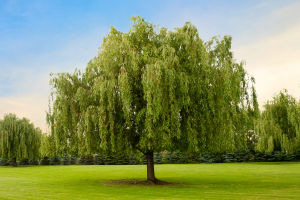Hello Lykkers! While plants may seem still and silent, they’re surprisingly responsive to their environment. Ever seen a houseplant stretch toward sunlight or a vine curl around a pole?
That’s no magic—it’s science, and it’s called tropism. Tropisms are how plants respond to various stimuli like light, gravity, or touch, adjusting their growth in smart, quiet ways.
In this guide, you’ll explore three fascinating types of tropism: phototropism (light response), gravitropism (gravity response), and thigmotropism (touch response). You’ll see how plants aren’t just passive—they’re observant, strategic, and beautifully adaptive.
Part 1: Reaching for Light and Grounding in Soil
Let’s begin with the basics—how plants use light and gravity as guides in their everyday growth.
Phototropism: The Light Seeker
When you place a potted plant near a window, you’ll notice it begins leaning toward the sunlight. This isn’t by chance—it’s phototropism in action. The plant detects where light is strongest and redirects its growth in that direction to get more energy for photosynthesis.
You can try this at home. Just rotate your plant a quarter-turn every few days. You'll see the stems slowly adjust, always seeking the light source. That’s thanks to hormones like auxins helping cells on the shaded side stretch faster, gently curving the plant toward brightness.
Gravitropism: The Gravity Navigator
Now look down—roots are just as clever. While shoots grow upward, roots grow downward. This response to gravity is called gravitropism. Even if you plant a seed sideways, the roots know to push downward into the soil, where water and nutrients live.
It’s almost like the plant has a built-in compass. Gravity influences how hormones are distributed inside, guiding root and stem growth without any need for instructions from outside. You just set the seed, and nature takes care of the rest.
Part 2: Sensing Touch and Staying in Tune
Plants don’t have nerves, but that doesn’t mean they can’t feel. Let’s take a closer look at how they react to touch and physical contact.
Thigmotropism: The Touch Responder
Ever watched a tendril wrap around a stick or trellis? That’s thigmotropism—the plant’s way of responding to touch. Vines like peas or cucumbers use this trick to climb and find support.
If you gently brush a tendril with your finger, you might see it start to curl. The cells on the side that makes contact slow down growth, while the other side keeps going. It’s a slow-motion hug that helps the plant anchor itself as it climbs toward more light.
Practical Wonders: Where You See Tropisms in Action
In gardens, greenhouses, or even on your kitchen counter, tropisms are everywhere. A sunflower turning with the sun. A root pressing deeper after heavy rain. A climbing vine twisting around your balcony railing.
If you take a few minutes to observe your plants daily, you’ll begin to notice their subtle shifts. They're always adapting, always responding—even if it takes a day or two for changes to show. Think of it as slow but thoughtful movement—no sudden jumps, but lots of intention.
Lykkers, tropisms reveal just how aware and alive plants really are. They reach for light, root themselves firmly, and curl toward touch—all without eyes or ears. Whether it’s phototropism, gravitropism, or thigmotropism, plants use natural signals to survive and thrive in the world around them.
So next time you water your herbs or rearrange a hanging fern, take a closer look. They’re adjusting, observing, and growing in more ways than you might expect. Nature never stands still—and neither do your leafy companions.


